
Lanzarote Canary Islands Spain
Lanzarote Canary Islands Spain Hyatt Secrets Bedroom Lanzarote Canary Islands Spain Timanfaya NP Lunar Landscape Lanzarote Canary Islands Spain Hyatt Secrets Gym Lanzarote Canary Islands
Much like any great city in Asia, at least one of New Delhi’s districts is sure to meet the needs of every kind of traveller. Nearer Old Delhi at the centre of the city, the streets become cramped with thick, streaming crowds of locals going about their daily business, but so too can most of New Delhi’s greatest sights be found here. It is urban India in its rawest, most unspoiled form. There is an incessant buzz of endearingly intense Indian culture that resonates through everything that happens here, from the market hawkers to the ornate ceilings of the grandest temples to the complex flavours of the street food that can be smelled wherever you venture. Those that require a break from the enticing activity of the city can find refuge in a number of different sites of spiritual serenity. Respite can also be found in the suburbs. As you venture away from the core of the capital, winding market alleys and grandiose examples of Mughal architecture are gradually ushered out by open green spaces and crumbling memories of times long passed. Each of New Delhi’s districts offers a window into the journey that India has been through and an indication of where the country is headed next.
A popular place to convene for both locals and tourists, Connaught Place is centred around a circular park, with roads diverging from the centre in a web of concentric circles. Amongst these streets are cafes, restaurants and a selection of antiquated cinemas – a lasting reminder of the area’s significance during the 1920s when Bollywood began to emerge as a popular film industry in India. Those interested in discovering the modern art scene in India should pay a visit to the Dhoomimal Art Centre, an institution dedicated to the promotion and preservation of the country’s modern art with a focus on the exposition of young artists’ work.
As well as its more contemporary draws, Connaught Place is also home to places of rich cultural and historical significance. Agrasen Ki Baoli is a fantastic example of a traditional Indian step well, constructed during the 14th century as a means of providing water to locals in Delhi. The mesmerising symmetry and unusual architecture techniques make this site that delves beneath the city streets well worth a visit. Gurudwara Bangla Sahib can also be found in Connaught place. A Sikh temple of grand significance, a visit to the pearl-white walls, golden domes and gently rippling waters of this spiritual structure inspire a deep calmness and serenity in an otherwise hectic neighbourhood. Another must see monument is the collection of astronomical tools of Jantar Mantar. These building-sized tools were constructed almost 300 years ago in order to measure the movements of celestial bodies, in turn gaining a greater knowledge of the universe and contributing heavily to the world’s scientific knowledge at the time.
For an immersive Hindu experience, visit the Hanuman Temple in Connaught Place during weekends, when festivities are at their peak at this religious site dedicated to the Hindu monkey god of the same name. One of the temple’s most notable features of worship is the continuous mantra chanting, which is said to have been sung non-stop since 1964.
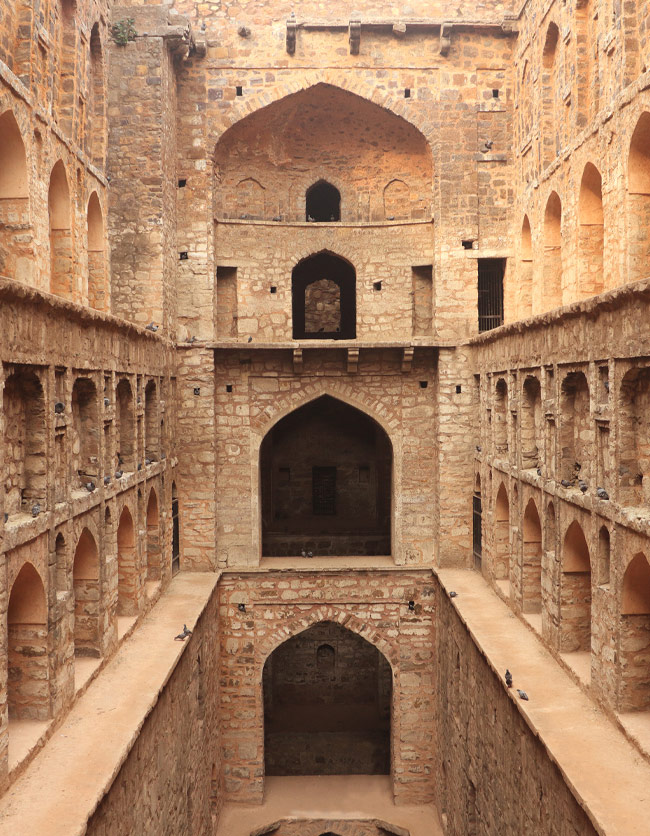
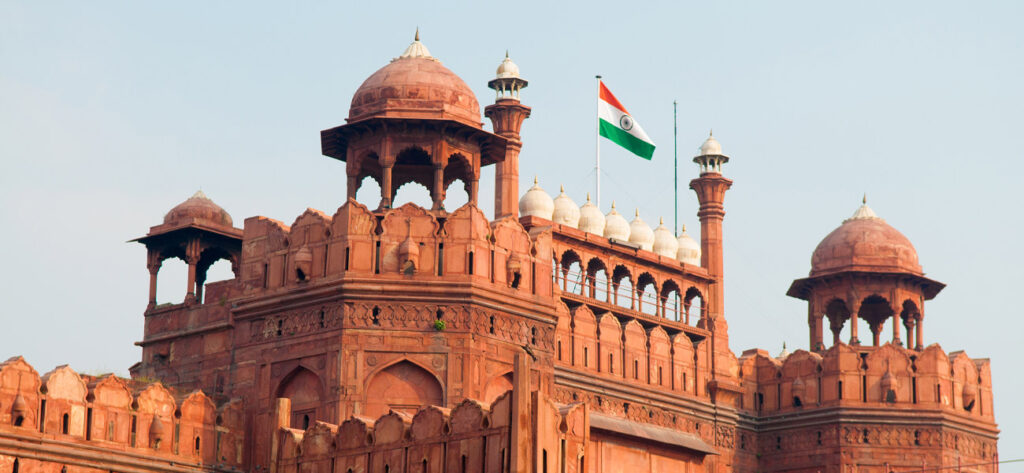
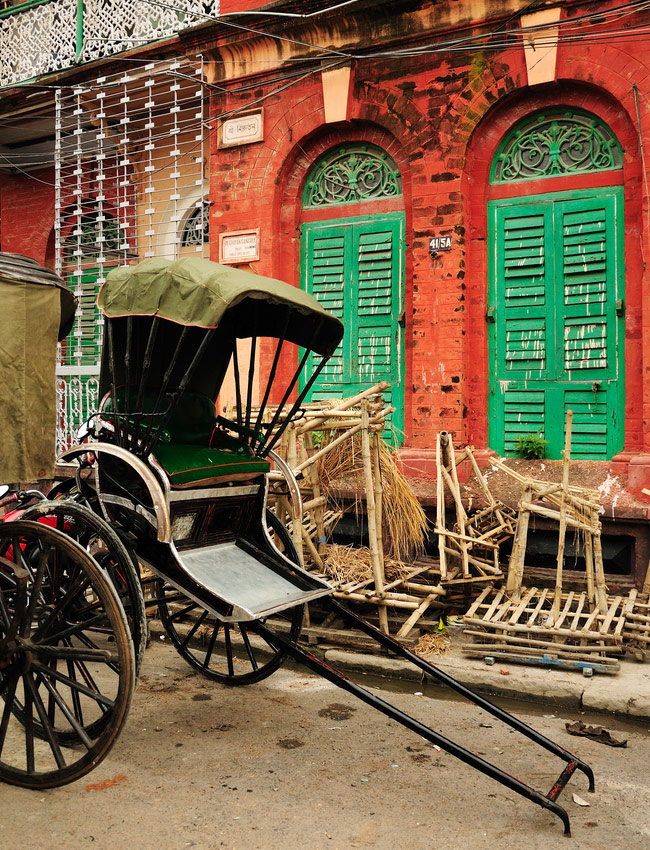
Chaotic, charismatic and home to New Delhi’s most famous landmark – welcome to Chandi Chowk. The heart of the neighbourhood is essentially one continuous sprawling bazaar, with stalls selling every Indian trinket imaginable. Looming above the streets to the east is the incredibly ornate, terracotta-toned facade of the Red Fort. The iconic Mughal palace was home to the emperors who ruled the region after shifting the capital from Agra. Constructed by Shah Jahan, the individual made famous by his construction of the Taj Mahal, similarities in style can be seen between the Red Fort complex and the structures that surround India’s most iconic building. Wandering the grounds within the fort’s walls immerses travellers into the world of the Mughals, with a collection of temples, halls and pavilions bringing India’s fascinating history to life.
As soon as you leave the fort’s main gate, a wave of chaos strikes you as you are faced with the bustling web of market stalls and traditional shop fronts. One of India’s oldest market sites and home to the largest wholesale spice market in Asia, wandering amongst the hoards of excitable locals in this area brings on a contagious energy that will have you exploring the seemingly endless market for hours on end. One endearingly harmonious feature of the area is its collection of holy sites, including mosques, temples, gurdwaras and churches. All the associated religions coexist peacefully in a symbol of respect that is often missing in the modern world.
When wandering through the bazaar, whether in search of street food, spices, clothing or camera lenses, keep your eyes peeled for the havelis in which many of the shops now sit. These spectacular former mansions were constructed during the 19th century by India’s wealthiest individuals and still hold a delightful charm in their haggard appearance. Some of the havelis are 150 years old and once had over 100 rooms, such was their opulence.
Referred to by some as New Delhi’s ‘backpacker ghetto’, the district of Paharganj possesses many features that one would expect from such a title. Cheap, busy and brimming with untamed character, the neighbourhood is where many of the capital’s hostel options are found. The neighbourhood is in an extremely convenient location just outside of the city centre and directly next to the train station, meaning ease of transport both into the heart of Delhi and on to your next destination. However, with the location and price come the crowds, which fill the streets from dawn until dusk.
Home to basic markets which cater to the needs of the travellers staying in the area, it is a good place to buy souvenirs without facing the infamously hectic markets, such as those in Chandni Chowk. The fact that the area deliberately caters towards tourists has led to a combination of cheap, tasty street eats and international restaurants, meaning an array of options sit on the doorstep of most of Paharganj’s accommodation options.
To call Paharganj busy would be a grand understatement. However, refuge can be found in any of the district’s many rooftop restaurants. Typically found around Main Bazaar Road, sitting in these spots is like being lifted from the madness of the city and placed in a relaxing pocket of tranquility. Most restaurants serve tasty food but the real reason to come here is the peace, quiet and rejuvenating greenery of the verdant potted plantlife.
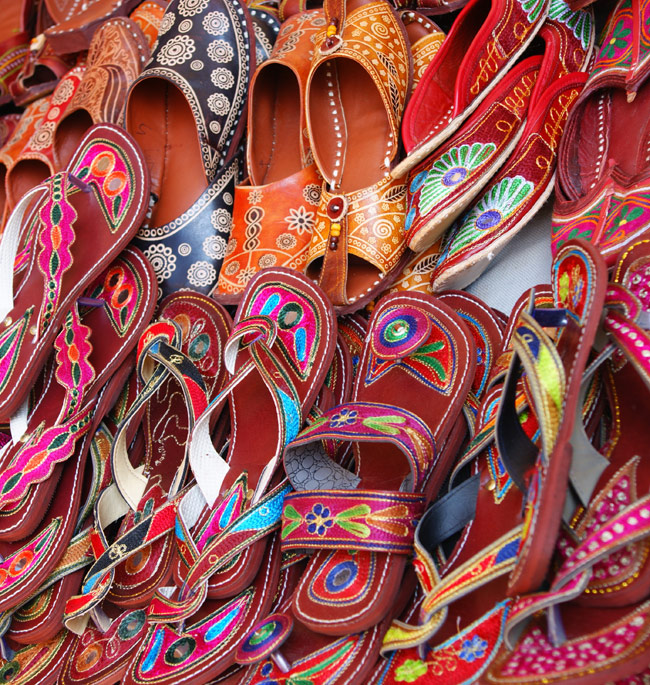
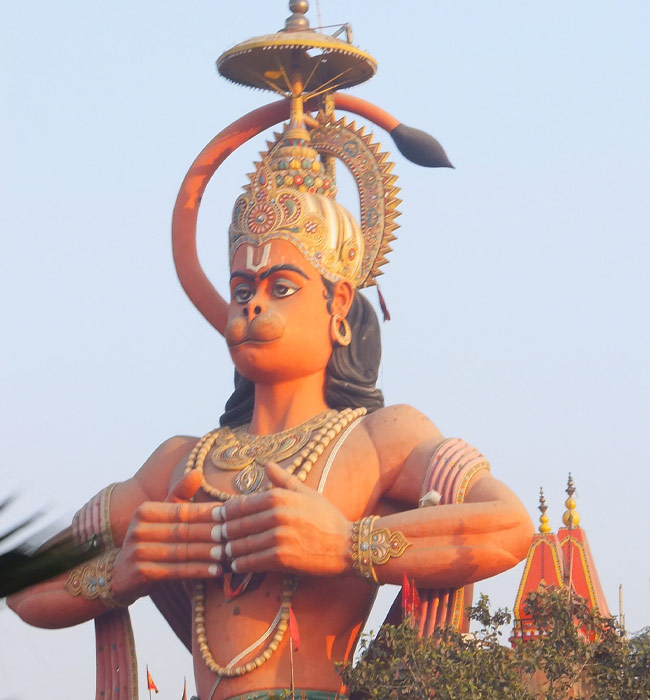
Karol Bagh is a neighbourhood that caters to the needs of every kind of shopaholic. Between the upmarket stores selling all the biggest brands from across the globe are the colourful market stalls that are synonymous with those found in India’s greatest cities. Amongst the latter options, shoppers can purchase anything from clothing to books to electronics. Even if you aren’t looking to buy anything, the markets at Karol Bagh are a good example of the more authentic market scene found in India, with different streets specialising in particular ranges of goods. With the market comes the inevitable presence of spectacular street food options, selling all of the classics found in Delhi (more on those later).
In contrast to the humble lifestyle of the market vendors, rising 108ft above the streets in the districts most eye-catching landmarks in the form of a giant orange statue of Hanuman, the Hindu God that represents strength and resilience. Visitors can enter a temple at the statue’s feet, with a door in the form of the open mouth of a beast that Hanuman has slain. It is an attraction that epitomises the garish charisma of Indian culture.
If you are visiting New Delhi at the end of October, visit Karol Bagh for one of the largest Durga Puja festivals in the country. This festival devoted to the Durga sees celebrations in the form of music, dancing and vibrantly colourful traditional shrines devoted to the Hindu Goddess of war.
As with any urban area, New Delhi isn’t short of up and coming neighbourhoods that draw the city’s most creative minds like moths to a flame. The most prominent of these is Hauz Khas, or more specifically the ‘village’ lying to the southeastern corner of the district’s Deer Park. A cluster of artsy bars, modern restaurants and intriguing galleries line the sides of the streets, giving the area an atmosphere of bohemian edginess that can be quite endearing. The area is also known for its ritzy shops, including a number of bespoke fashion boutiques, expert tattoo studios and local galleries selling authentic artwork.
Although it is most commonly associated with an enticing modernity, there are also echoes of India’s great history found amongst the contemporary focus of Hauz Khas. Situated in the picturesque Deer Park next to the smooth waters of the reservoir are a compilation of ancient domes and crumbling stone walls that date back to the 13th century. The peacefulness of the park and culture-saturated structures combine to create a serene experience that will transport you from the city to a time long gone.
If you’re seeking a good night out in New Delhi, Hauz Khas may well be just the place. A number of bars and clubs can be found here, some of which sit on the border of Deer Park, making for a beautiful view as you sip on a refreshing cocktail following a day of shopping and archaeological exploration.
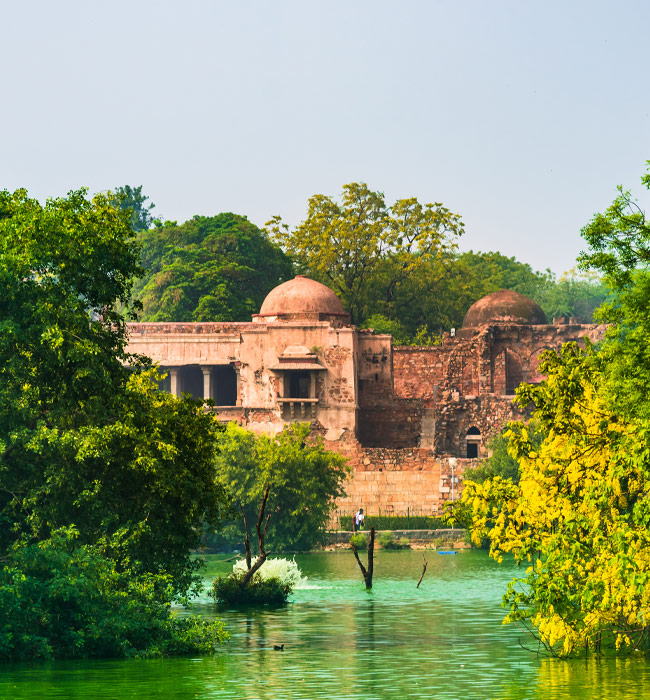
From the ancient corners of the city walls to the relaxed beaches of Lapad, Dubrovnik has plenty of interesting places waiting to be explored. For such a small destination, the contrast between the Old Town and the rest of the city is fascinating, and the beautiful coastal location means picture-perfect views are around every corner. Here is a selection of our favourite spots in Dubrovnik.
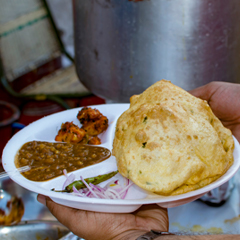
Consisting of either a bhatura – fried flour bread – or a traditional samosa that is then topped with a healthy portion of chana masala, a chickpea-based curry that is invariably bursting with flavour. These dishes are popular throughout India but are typically associated with the northern states. Sita Ram Diwan Chand in Paharganj has been serving nothing but this dish for years and draws hundreds of locals to its simple canteen on a daily basis.
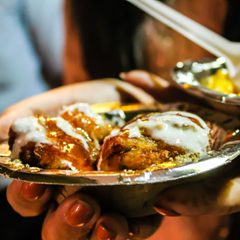
Lightly spiced potatoes are fried before adding a squeeze of lime juice and any of a number of toppings, from mint leaves and pomegranate seeds to yoghurt and chutney. It is an incredibly popular snack in Northern India that has been mastered by many of New Delhi’s street food vendors – just keep your eyes peeled for boiled potatoes being fried on a large skillet and you’ll have hit the jackpot.
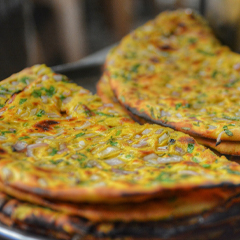
The name given to a traditional stuffed wheat flatbread, parathes can be filled with any combination of spiced vegetables, including cauliflower, spinach, chickpeas and potatoes. The dish is typically served with a variety of accompanying dips and sauces, such as dhal or mint and coriander chutney. Paranthe Wali Gali in Chandni Chowk is a small hidden street devoted to the art of creating this amazing dish.
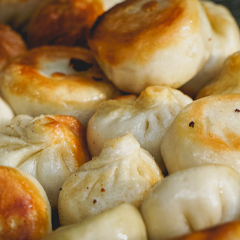
Originating in neighbouring Nepal, momos are synonymous with the steamed dumplings that one would typically associate with the orient. These snackable bites are steamed streetside and can be filled with any number of Indian ingredients, including paneer, a traditional cheese that is frequently used in curries. Momos are usually served with a selection of dipping sauces, creating a real adventure for the tastebuds.
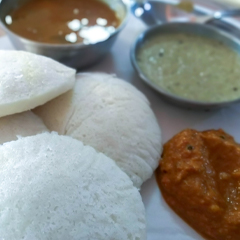
Light discs made from rice flour – idli – are the basis of this dish, which is usually served at breakfast time. Accompanied with a delicious lentil-based stew in the form of sambar, it may seem unconventional in the morning but it is truly scrumptious and is sure to give you the energy required to start a day of urban exploration. Idli can also be offered with a smooth coconut chutney, offering an alternative take on this classic.
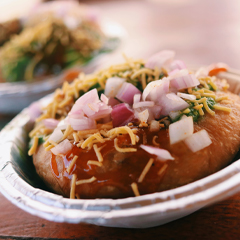
Kachori are deep fried Indian breads with a crispy outer shell that are filled with any number of fillings, including potatoes (aloo kachori), cheese and aubergine (baingan ki kachori) or spinach (saag kachori). These are either served with a small(ish) portion of curry or even as an extra topping on dishes such as aloo chaat. Small yet filling, they make the perfect on-the-go snack.
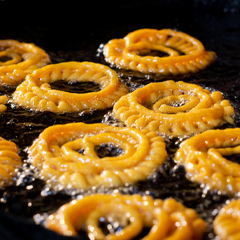
India’s most popular sweet eat, jalebis are strings of maida flour that are deep fried before being absolutely drenched in sugar syrup. They tend to take on what some may consider to be an unappealing shade of orange, but are an absolute must try for anyone with a sweet tooth. Not entirely unlike a syrupy donut, jalebis are as moreish as they are decadently rich.
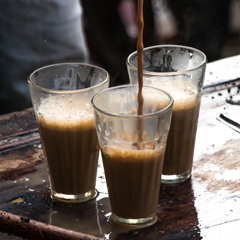
No trip to India is complete without hearing the screams of “Masala chai!” from passing chai walas, busy selling their goods in just about every location across the nation. Everyone that visits this vast and magnificent country should take the opportunity to try local chai from the flask of a wala. A small cup of extremely sweet and milky tea, it is combined with cardamom, cinnamon and cloves to give it a distinctly Indian taste.
The transport system in New Delhi has recently been revolutionised by its new Metro train network, which is quick, convenient and inexpensive. There are nine lines that travel to the far corners of the city and the network seems to expand every year. Due to the vast size of the city, there are still some pockets of New Delhi that aren’t particularly close to any metro stations. However, the lines do reach as far as the city’s airport on its southwest boundary.
For a more thorough transport system travellers should utilise the bus lines. The bus system visits just about anywhere in the city and for extremely cheap prices. The flaw in the buses is their quality. Whilst some have no real issues, others are downright unpleasant to be in. Whilst you may be saving money, the potential vulgarity of the experience may not prove worth the pennies that you saved.
Another transport option available across the entire capital are the autorickshaws that are so often associated with Indian culture. Drivers will often refuse to turn their meters on so it can be difficult to know whether or not you are being overcharged for your journey. Ensure that you agree a price before setting off on your journey or your driver is likely to charge you ‘tourist prices’.
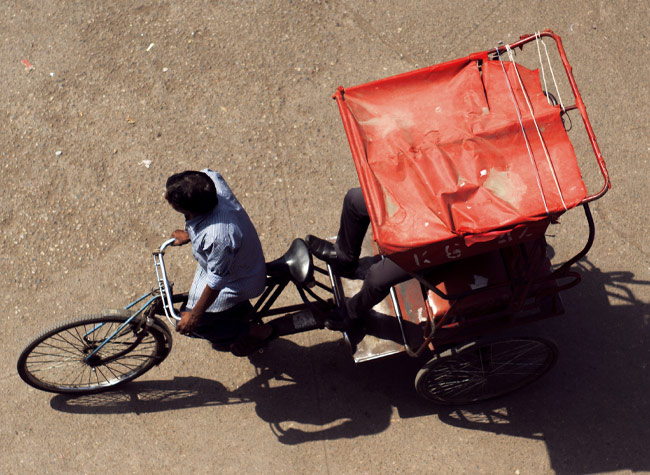
The streets of India’s capital are home to such a plethora of different places to explore and experiences to indulge in that it would take weeks to say that you have covered everything that the city has to offer. Raucous crowds to peaceful gardens, ancient buildings to ultra-modern art, humbling volunteer work to regal ceremonies. All possible corners of entertainment are covered in a range of ways, making most of the city worth venturing into. Here are just a few of the best things that New Delhi has to offer those who visit.
Played from the ghats of Varanasi to the streets of Mumbai, cricket is so insatiably popular in India that it is often referred to as a religion. When striking up a conversation about the sport with a local you will witness a passion and happiness take over their emotions as they chat to you about the ins and outs of the game, share their thoughts on the current Indian team and inevitably mention the great Sachin Tendulkar, who many insist is the best in the world despite his retirement in 2013. It is a special amalgamating activity that draws the nation together in an uproarious fashion. As former Indian captain MS Dhoni once said: “You don’t play for the crowd, you play for the country”.
The best way to experience this engaging energy? Attend a game of course. Due to its immeasurable popularity you may struggle to get your hands on tickets to watch the international team play, so the next best thing would be to attend an IPL game at the Arun Jaitley Stadium, home of the Delhi Daredevils. Even those who couldn’t think of anything worse than watching cricket for half a day are sure to become absorbed by the impassioned atmosphere that resonates throughout every individual in the stadium for the entire match. The IPL season runs from March to May every year, so keep your eyes peeled for tickets.
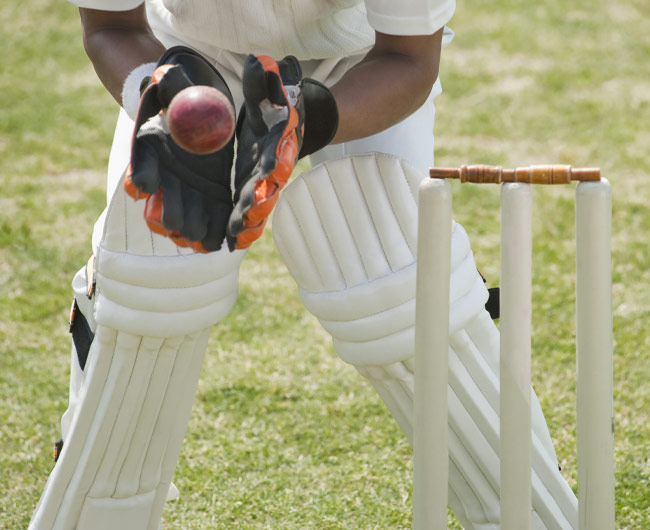
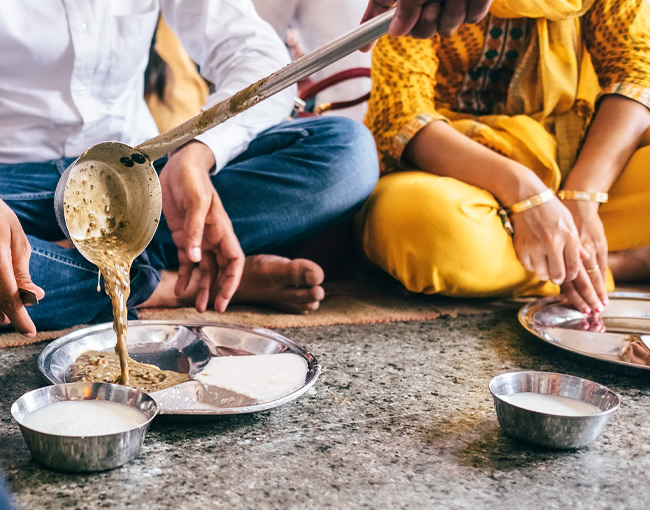
As with many Sikh gurdwaras, the Gurudwara Bangla Sahib in Connaught Place is home not only to a place of worship but also an incredible volunteering effort that sees 10,000 people fed for free everyday. A spectacular system is in place whereby volunteers gather to create industrial sized vats of dhal and mountains of chapatis rolled to accompany this incredible meal. Visitors are free to help out with the well rehearsed routine, stirring curry with a spade-sized spoon or flattening countless chapatis in order to feed the thousands that flock to the gurdwara on a daily basis. It is an immersive experience that helps you not only do your bit to help those in need but also opens your eyes to the immense generosity of the Sikh faith.
Having helped prepare the food you are also free to sit amongst those visiting the complex and eat a free meal. Uplifting and incredibly humbling, you will eat the delicious meal whilst chatting to friendly locals sitting at your side. The gurdwara sees creed and class tossed aside as tourists eat with locals, Hindus and Muslims eat with Sikhs and the homeless eat with the wealthy. The gurdwara’s kitchen is an overwhelming reflection of Sikh beliefs in equality.
A lasting reminder of the times of British rule in India, every weekend sees a changing of the guard ceremony take place at the President’s Palace, Rashtrapati Bhavan. A military performance that matches the equivalent at London’s Buckingham Palace in terms of lavish uniforms and precise synchronicity, the brief ceremony sees the President’s Body Guard change their post to the sound of a live rendition of the Indian national anthem. The uniforms worn by the guards, both mounted and on foot, are an excellent combination of Indian and British traditions.
Whilst undeniable parallels can be drawn between the Indian ceremony and its British equivalent, there is an immense charisma and individuality about the former that is utterly engaging. The outfits worn by each regiment are a spectacle in and of themselves, but the dramatic steps and disciplined choreography that make up this weekly ceremony combine perfectly with the dramatic drums and brass instruments in a display that is befitting of this nation’s justified sense of pride.
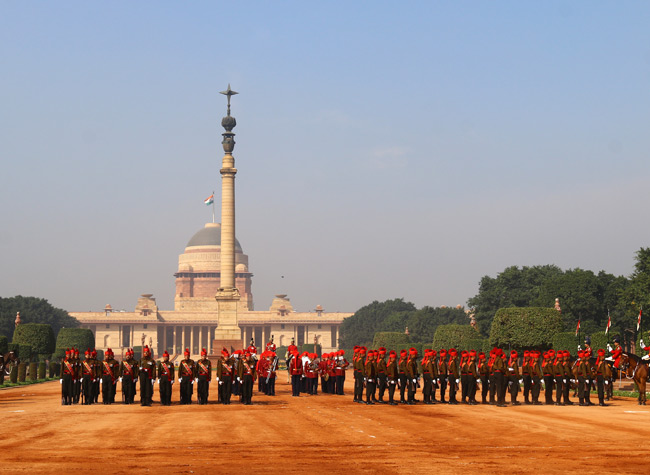
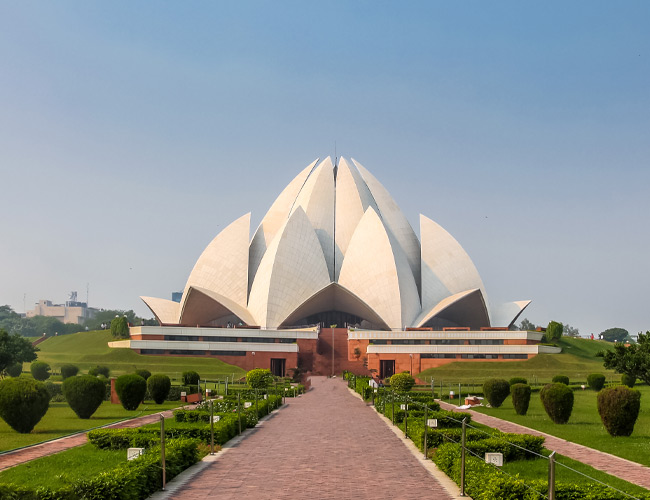
In the south of New Delhi stands a building that is as architecturally stunning as it is theologically intriguing. The Lotus Temple has a mesmerising design consisting of 27 “petals” made using white marble to form a shape that resembles India’s national flower. Placid pools of water decorate the outside of the temple, mirroring the great white figure from its nine identical sides. At night time the structure is lit up like a giant white beacon against the dark sky.
The temple is a place of worship for those of the Baha’i faith, a contemporary religion that believes in an element of truth being present in each and every religion. Followers maintain that the messiahs of each religion are all messengers from the same God, who is revealing his will to the world through said messengers in an attempt to guide the human race in the correct direction. As such, the Lotus Temple is welcoming to members of every faith, providing a place in which all can worship and reflect. There is something pleasant about its all-encompassing attitude and acceptance of any who wish to visit, even displaying the scriptures of each faith throughout its immense hall.
Resting on the western bank of the Yamuna River are a collection of tombs built for the former Mughal noblemen that once ruled over North India. Set amongst a collection of peaceful walled gardens befitting of the status of those buried there, the tombs bear all the hallmarks of any great piece of Mughal architecture – regal domes, palatial archways and a level of symmetry that is mesmerising in its precision. The tombs are built from the same red sandstone that was used to build the Red Fort, giving them a crimson colouring that causes them stand out against the skyline.
The most notable of the tombs are those of Isa Khan and Hamuyan. The former is smaller in comparison but its octagonal structure looks identical from all sides, with intricate detailing that marries the grey quartzite and red sandstone materials with beautiful patterning. A mosque dedicated to Isa Khan lies opposite. The most impressive structure in the complex is Hanuman’s tomb however. Set amongst the tranquil green lawns and soothing water features of India’s first garden tomb lies the mausoleum of former Mughal Emperor Humayun. The striking combination of red sandstone and gleaming white marble used on the exterior is impeccable in its precision. The first red sandstone structure of its size, the tomb’s plinth alone has a total of 56 archways that have been constructed with the unerring symmetry associated with all Mughal architecture and the gleaming white dome that sits atop the mausoleum is reminiscent of the opulence of India’s most famous building – the Taj Mahal. It is a fascinating structure that cannot be missed.
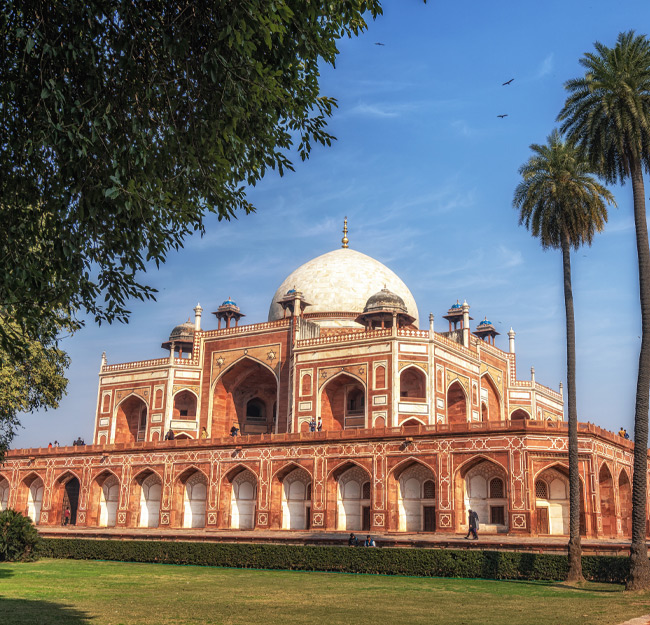
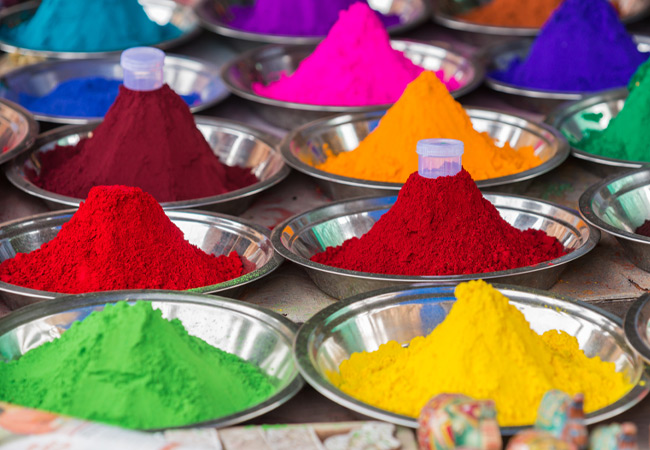
Lodhi in the south of New Delhi was one of the last areas to have been built by the British before leaving India in 1947. Over 60 years later it has found new life as a popular space for street artists to display their talent through mesmerising murals that cover entire buildings. Through its rejuvenation the area draws tourists and locals alike to admire the artwork on show.
International artists from across the globe have been part of the revitalisation of Lodhi and each piece has a story behind it, typically using local colours in their displays. For example, Polish artist NeSpoon has created a mural inspired by lace doilies, an artform with feminine connotations which she utilises to reflect the history of women in the respective locations of her pieces. Conversely, Singaporean artist Yip Yew Chong creates very human pieces that reflect the day to day activities of the people who live in the area in question. An alternative to a typical art gallery, the district offers an interesting perspective on Indian life from the viewpoints of visiting artists.

Lanzarote Canary Islands Spain Hyatt Secrets Bedroom Lanzarote Canary Islands Spain Timanfaya NP Lunar Landscape Lanzarote Canary Islands Spain Hyatt Secrets Gym Lanzarote Canary Islands
We are passionate adventure travelers who want to share the world and our travel experiences with everyone…
This website uses cookies so that we can provide you with the best user experience possible. Cookie information is stored in your browser and performs functions such as recognising you when you return to our website and helping our team to understand which sections of the website you find most interesting and useful.
Strictly Necessary Cookie should be enabled at all times so that we can save your preferences for cookie settings.
If you disable this cookie, we will not be able to save your preferences. This means that every time you visit this website you will need to enable or disable cookies again.